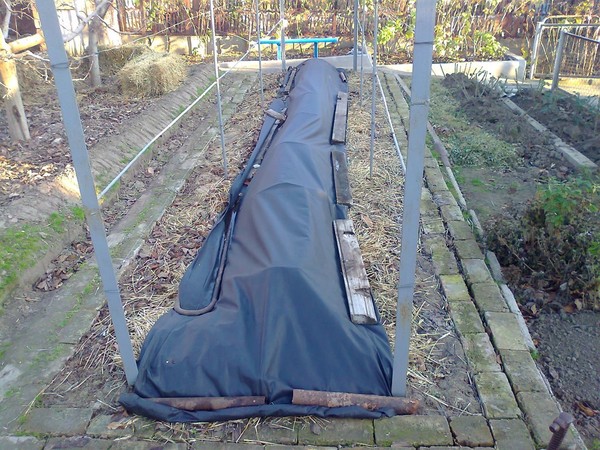
Grow heat-loving grapes in the middle lane for the strength of each summer resident. Especially for harsh conditions, frost-resistant varieties have been bred, and with full care the plants will yield by autumn.
But in such a climate, the culture for the cold period must be covered, otherwise even zoned species will not survive the frost.
Preparing grapes for the winter in the suburbs - an important agricultural technique that allows you to protect the vine from subzero temperatures. It is enough to thoroughly study the main stages of preparation, apply knowledge in practice and in the future there will be no problems.
Content
Preliminary Activities
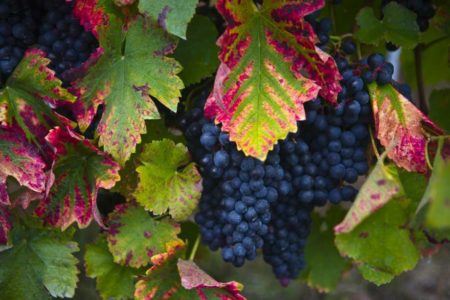
Before deciding to grow this capricious and heat-demanding crop in the middle zone, it is necessary to take into account a number of conditions:
- to choose a suitable place for grapes on the plot, a sunny, sheltered from the winds, place;
- to acquire varieties resistant to cold and whims of the Moscow Region climate;
- Prepare materials necessary for shelters in advance.
The off-season period in the suburbs is unpredictable; one must be prepared for any weather anomalies. Therefore, before harvesting stock arcs for shelters, non-woven material, boards. In September, they pick up spruce branches, make wooden shields, so that before the onset of stable cold weather they will be fully prepared for wintering.
Preparing plants before shelter
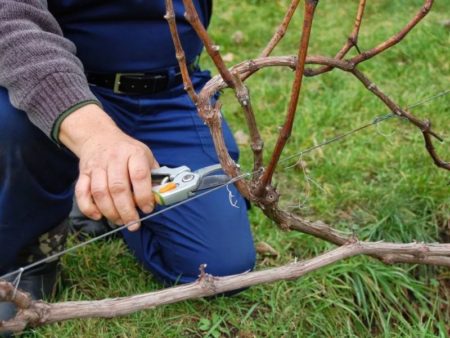
Grapes in the Moscow Region are looked after throughout the season, since even the strongest shelters will not help if weakened plants leave in the winter.
Care measures:
- deformed, diseased shoots are cut out;
- they treat plantings with drugs from infections, pests;
- regularly feed the culture.
For grapes grown in the middle zone, it is recommended to normalize the number of clusters on the vine. Firstly, with a heavy load of branches, not all clusters ripen. Secondly, with high yields, the vine is lignified for a long time and may not have time to prepare for the cold.
Approximately from mid-August, watering of plantings is reduced and then completely stopped. This helps to delay the growth of shoots, the accumulation in the roots of special phytohormones that provoke a dormant period.
When dry autumn carry out moisture watering grapesobserving the exact timing of the procedure. Fertilize, remove excess shoots.
Heavy watering
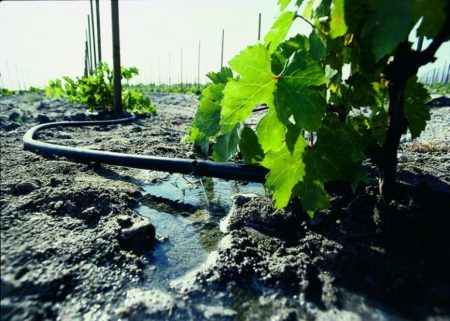
Autumn irrigation of vineyards affects future yields. Creating a supply of water for the roots, they achieve optimal soil moisture, adaptation of the plant to low temperatures.
Water abundantly, trying to get water into the deeper layers of the soil. Irrigation rates depend on the age of the bushes, on average - from 5 to 10-12 buckets per plant. Dates - mid or end of October, are guided by the weather and the condition of the plants.
The best way is to water through special pipes buried in the ground. In the absence of such devices, irrigate the earth through grooves, holes. In the morning the soil is loosened, watered later in the evening, and then, the next day, it is again carefully loosened.
Moist soil freezes less, which minimizes the risk of damage to the roots of plants.
Fertilizer
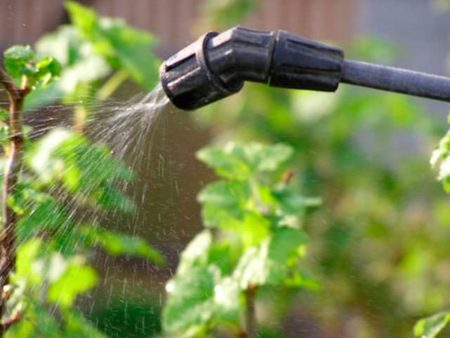
The plant spends all its strength and nutrients on the ripening of berries. Therefore, in the fall in the suburbs, grapes need additional top dressing. Before falling leaves, it is recommended to treat the bushes with solutions of boric acid, potassium permanganate or iodine.
For root dressings use:
- extract of any potash and phosphorus fertilizers;
- dry mixture of superphosphate (25 grams) and potassium salt (25 grams).
Dry fertilizers are thoroughly mixed with soil. Water compounds spill the earth to a depth of 20-30 cm. Pour into holes or through pipes.
Pest and Disease Treatment
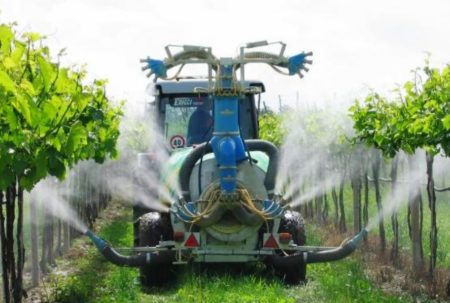
Grape Care in Autumn includes treatment of plants from diseases. Before wintering, grape plantings are sprayed with preparations containing copper. They will protect the vine from black spotting fungi, anthracnose, mildew.
From pests, a reliable barrier will provide treatment with Bi-58, Topsin, Decis. Sprayed only after picking berries, observing the provisions of the instructions. No whitewashing will be the whitewashing of the lower part of the shoots of grapes, which protects plants from rodents.
Pruning
Important and obligatory reception before wintering - pruning bushes. Main goals:
- remove excess sterilized shoots;
- pruning young vines that did not have time to mature by the deadline;
- trim sick, damaged branches of bushes.
It is recommended to prune the vine when the first cold weather sets in, but at a temperature not lower than minus 3 degrees. Immediately after picking the berries, grapes cannot be cut, the plant needs to straighten after stress, to accumulate a few nutrients. Trimming with pruning is also not worth it, otherwise the bush will be wasting food.
Key crop options:
- with the stem;
- fan way.
The methods are chosen based on the characteristics of the varieties of culture, the possibilities of the gardener.
The standard method of pruning grapes
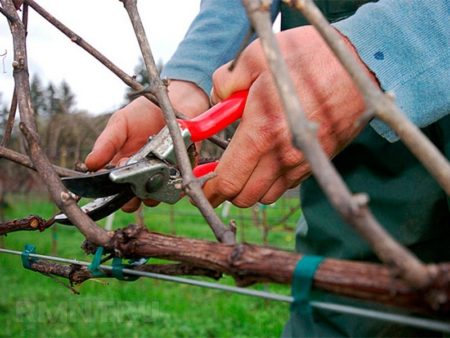
In the districts of the Moscow region it is rarely used, most often for varieties grown for decorative purposes.
Events:
- pruning a plant in the first year in the fall to 2-4 eyes;
- in the spring of the second year, the selection from the overwintered shoots of the strongest - the stem and the additional (reserve);
- autumn pruning of the future stem for 2-3 eyes;
- pruning a backup shoot for 2-3 eyes;
- all other shoots break out;
- in the third year in the fall, the stem is cut at the selected height, the two upper shoots are left to form the sleeves;
- pruning a backup shoot leaving two shoots.
Each year, on the backup shoot, kidneys (5-6 pieces), as well as substitution branches, are kept.
Fan or non-stem grape cutting scheme in the suburbs
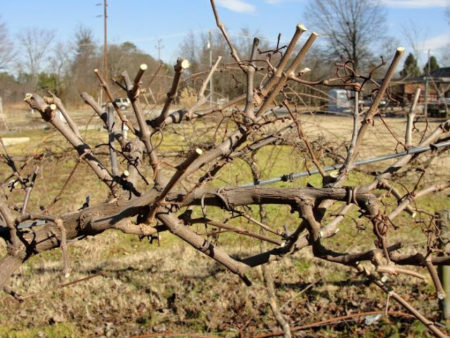
The method is popular in the zone of sheltering viticulture, as it allows you to save planting even in severe frosts. Features of fan molding:
- leave several perennial sleeves with fruit vines;
- the skeleton of the bush is formed within 2-3 years, then only maintain the shape according to the selected scheme.
The choice of the number of sleeves is determined taking into account the type of trellis, climatic conditions, and the wishes of the winegrower.
Events:
- in the autumn of the first season, the bush is cut off, 2-3 buds are left;
- in the second year in the spring, two shoots leave to grow, growing on opposite sides of the main branch of the bush;
- autumn pruning of the second year - according to the replacement knot with the remaining 2-3 eyes.
In the following seasons, in the fall, the shoots are cut, which have yielded crops and leave new vines from the sprouts of the knot of substitution.
Grape shelter
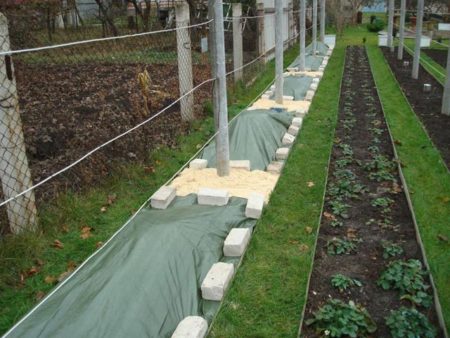
They begin to shelter the shoots when the bushes have dropped leaves, a constant air temperature has been established (within minus two degrees Celsius). You can’t cover early, because the shoots due to the excessively warm microclimate inside the protection will mate.Late dates threaten freezing of the vines, the first frosts for young plantings are especially destructive.
There are many ways to preserve bushes in the cold season, here gardeners are already choosing the most suitable for themselves. In the suburbs usually use full shelter, using various materials: earth, films, spruce branches and more.
Grape Shelter
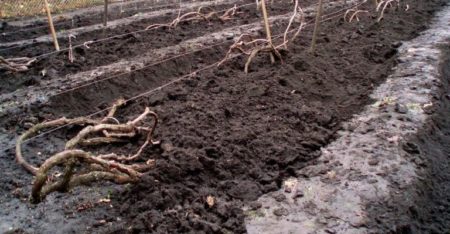
Simple technology available even for beginner growers. The method is not the most effective, especially for young plantings, since during severe winters there is a high risk of plant freezing.
Stages:
- the vines are removed from the supports, treated with a solution of iron vitriol (300 grams per bucket of water), tied in bundles;
- planks, slate, plywood are laid on the ground;
- the bunches of vines are bent to the ground, they are pinned with metal brackets;
- sprinkle grapes on top with a layer of slightly moistened soil (up to 13-15 cm thick).
For reliability from above, the earthen layer is covered with foliage, then another layer of soil. After the first snowfall, shelters are additionally sprinkled with snow.
Gardeners in the suburbs often plant grapes in boxes or trenches. When sheltering for the winter, the cropped vines remain bent into the trench and insulated from above.
Shelter of grapes with a film
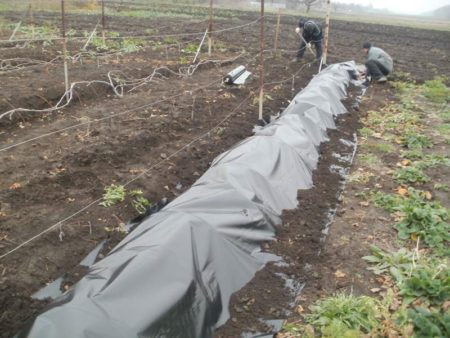
Long-life polymer films reliably protect plantings from extreme cold and freezing. It is advisable to use materials with a mirror coating or opaque films of light shades that do not transmit and reflect sunlight. Under such shelters there is no greenhouse effect, no condensation.
For rows of grapes up to 15-20 meters long, whole film strips are used. With long rows (over 20 meters), shelter landing with leaving ventilation holes.
Stages:
- arcs made of steel wire or wood (ash, maple, acacia) are prepared in advance;
- stack planks on the ground;
- cut the vine, bind, bend to the surface of the earth;
- shoots must lie on the planks, not touching the ground;
- arcs are installed on top;
- stack the film neatly on the arcs;
- the edges of the film shelter are fixed with stones, earth, boards;
- end openings are left open until frost (-12ºC ... -15ºC).
Top winter shelter sprinkled with snow.
The installation of arcs is mandatory, since in this case the film does not touch the stacked vines. Without arcs, when laying the film immediately on the shoots, there is a risk of frost holes and cracks on the vine. This leads to deformation of the bushes, the emergence of various diseases.
To increase the effectiveness of the shelters from the film, the aisles are mulched. To protect the grapes from rodents, bait is placed under the film.
Shelter of grapes with spruce branches
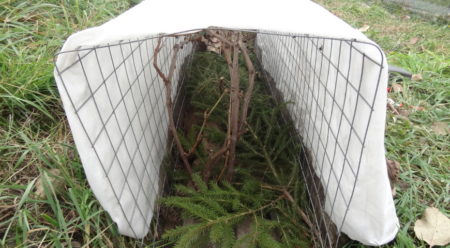
Suitable for small planting areas, young grapes. Lapnik is prepared in advance, only green branches are used.
Stages:
- cut the grapes according to the selected scheme, bind the sleeves and vines;
- the bunches are bent to the ground, having previously placed boards, slate under them;
- shoots are twisted into a ring;
- covered with a spruce top, reinforcing along the edges with stones or bricks;
- on top of the lapnik cover with burlap.
Experienced gardeners near Moscow note the effectiveness of the method. Even in severe frosts, provided that everything is done correctly, shoots in the shelter will not freeze.
Shelter of grapes with purchased materials
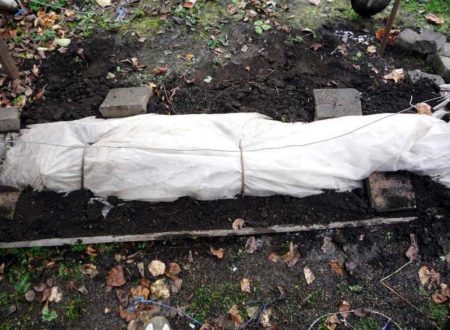
In addition to land, film and spruce branches, grapes cover:
- straw;
- sawdust;
- agrofibre;
- mats from reeds.
Most often, gardeners use combined versions with different materials (lapnik and earth, sawdust and film). Popularly shelter landings non-woven materials (spunbond, lutrasil). Such fabrics are environmentally friendly, they pass moisture well (no condensation is created), and they delay the passage of UV rays. Thanks to a special production technology, the threads of the fabric withstand temperature extremes, high humidity.Agrofibre is suitable for repeated use (up to 4-6 seasons).
Stages:
- the bushes are cut, disinfected with potassium permanganate or a solution of copper sulfate;
- bend shoots in trenches, pinning with brackets;
- set the arc of steel wire;
- lay fabric on arcs, leaving the ends of the shelters open;
- later snow is sprinkled on top of the protection.
If it is supposed to cover without a trench, then bundles of connected shoots are wrapped with agrofibre, and then bent to the ground. The vine is “swaddled” along its entire length in order to shelter from frost.
When to clean shelter after winter
Plants are opened in the spring gradually, aerating the vine on warm days. The grapes can withstand slight cooling down to -4ºC, but not lower. Therefore, shelters are removed when stable positive temperatures are established and the snow completely melts.
The soil must dry, it is unacceptable that water accumulate near the plantings. Grape growers without experience trying to save the vine from the cold, open planting late. But this leads to vine vaporation, as well as the beginning of shoot growth under shelters.
If it is warm outside, and the shoots are not open, it will still begin to grow. As a result, having opened the defense, weak, chlorophyll-free plants (leaded) are obtained. They are not viable and will have to be removed. To prevent this, they monitor the condition of plants, outdoor temperature indicators, weather conditions.
Film shelters are removed for the day, but at night, in case of cooling, they are closed again. Fully open the landing upon stable warm days, when the threat of frost passes. Grape plantings are treated with fungicides and special solutions from pests:
- Nitrofen;
- Oxychom;
- Karbofos.
The shoots are checked for viability: they cut a piece of secateurs, examine the kidneys. The cut should be green, under the scales of the kidneys - the green rudiments of the leaves.
Immediately after removing the shelter, the grapes are lifted onto the trellises, but not tied. Lohse needs “rest” and adaptation after winter. The shoots are laid out on a trellis for ventilation, for about 2-3 days. Then the plants are tied up (dry garter).
Specific dates are determined by the weather, the condition of the plants.
Useful Tips
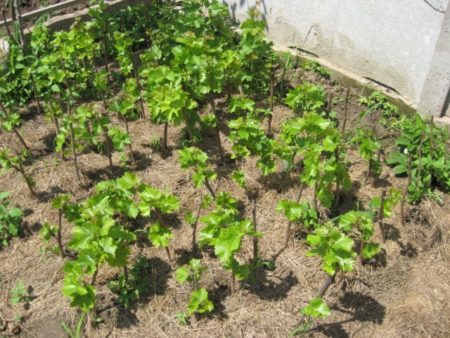
Gardeners with experience have accumulated rich experience in caring for a vineyard in the difficult conditions of the middle lane. Some tips on how to prepare grapes for the winter, from the "experienced" winegrowers near Moscow:
- it is recommended to thoroughly mulch the soil between plantings;
- for shelters use the earth from the aisles, and not from the roots of the plant;
- when sheltering with the ground, a variant with a three-layer shelter (soil, foliage or well-rotted compost, loose soil) is used;
- snow is also used for snowing tracks;
- twice a year, the soil around the plantings is dug up to reduce the risk of freezing of the roots of grapes;
- under a vine it is impossible to lay heaters, only boards, slate, roofing material are suitable.
Knowing how to cover grapes for the winter in the suburbsHaving correctly prepared the plantings for winter, the gardener can be calm for the safety of the bushes. A successful wintering of culture is the key to future high yields, the absence of plant diseases, and minimum hassle for the winegrower in the summer.

 Non-covering winter-hardy grape varieties for Moscow region
Non-covering winter-hardy grape varieties for Moscow region How to keep the vine in winter
How to keep the vine in winter When can I transfer grapes to another place in the fall
When can I transfer grapes to another place in the fall How to cover and prepare grapes for the winter in the suburbs
How to cover and prepare grapes for the winter in the suburbs